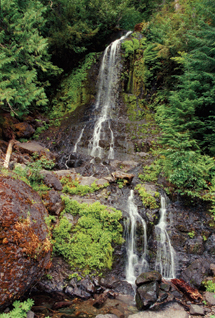Epson’s Perfection 4990 PRO; Is This An Uncompromised Do-Everything Scanner? Page 2
Of course, the one most compromised kind of scanning, and the greatest challenge
to a letter-sized flat-bed, is 35mm film. With the previous 4870 model a considerable
achievement was made with the introduction of an optical resolution of 4800dpi.
That remains the same with the 4990, but the improvements in the process that
were incorporated by extending the film scanning area and using a new, tube-type
moving cold cathode light source has resulted in scans that include the reproduction
of finer detail, and the improvement in the dynamic range. This has improved
slide scanning by capturing a greater range of film image densities. In addition,
either scanning a color negative or an E-6 slide, Digital ICE did a thorough
job of cleaning any dirt or defects. I found nearly every one of my scans of
35mm images could go directly to a print on 13x19 paper with print values and
image qualities that held together very respectably.
I also did not neglect my main reason for having a film scanning flat-bed in
the past (not willing to afford a pricey, dedicated large film scanner)--to
scan 120 and 4x5 film. And because I'd already obtained very fine results
at both ends of the size range, 8x10 and 35mm, I expected the results to be
good. And they were, particularly scanning black and white silver-based film.
I got a crisper sharpness and smoothness of tones with no exaggerated graininess
that I've not seen before from a flat-bed. However, I must admit I still
prefer to scan black and white silver film as a 48-bit raw positive and then
correct and invert in stages in Photoshop rather than using either scan drivers'
software to invert and adjust the image values.
 |
 |
|
|
||
About the only complaint I had about the scanner was the time scans took at high resolution when Digital ICE is turned on. It's not the slowest scanning 35mm at 4800dpi, but scanning 120 film outputting a 15x19" image at 300dpi, which is something less than the scanner's maximum optical resolution, took some time. I can only attribute this very slow processing to the fact Digital ICE is cleaning a larger film area.
Evaluation And Recommendation
I have been testing and reporting on Epson, and other flat-bed scanners, for
some years now and cannot avoid coming to the conclusion that this new Epson
Perfection 4990 PRO covers all the bases that distinguish multipurpose, professional-grade
scanners in a smaller, lighter, consumer product at less than half the price
of professional models. The only significant difference is that professional
scanners all have three-line CCD linear sensor arrays, and the Perfection has
a six-line linear CCD array, with the inherent optical challenges that entails.
In all, however, the differences are becoming less apparent, and the 4990 yields
excellent sharpness and image detail fidelity.
 |
|
|
For any photo enthusiast with a mixed library of film and prints in various formats, the Epson Perfection 4990 PRO is an ideal choice. The greater expense of the PRO model, at $599, vs. $499 for the PHOTO model, is mostly to obtain SilverFast Ai 6. To me the extra $100 is well worth it if your goal is to produce pristinely adjusted, professional-quality images. If you are like me and your library includes many images on older films (one reader recently related his collection includes lots of Kodacolor film), the adjustment tools SilverFast Ai 6 provides will be appreciated. However, if your film library is entirely 35mm, I still recommend a dedicated 35mm film scanner.
Technical Specifications
Type: Flat-bed single pass color scanner
Resolution: 4800dpi optical, 4800x9600dpi maximum hardware
resolution with Epson's Micro Step Drive, 12,800dpi maximum interpolated
resolution
Color Depth: 48-bit color scanning with 4.0 dynamic range for
transparencies, 16-bit internal/external, 16-bit gray scale scanning
Interface: Hi-Speed USB 2.0 and FireWire (IEEE 1394) standard
Dimensions And Weight: 18.7x12x5.3", 14.8 lbs
Scanning Speed: High-Speed scan mode--4800dpi; Monochrome
(bi-level)--approx. 12.3 msec/line, Full Color--approx. 12.3 msec/line
Film And Print Light Source: Cold Cathode Fluorescent Lamp
(CCFL)
Maximum Read Area: 8.5x11.7"
For more information, as well as to purchase the scanner directly, please visit
the Epson Store on the web at: www.epson.com.
You may also contact Epson America, Inc. at 3840 Kilroy Airport Way, Long Beach,
CA 90806; (800) 463-7766, (562) 981-3840.
- Log in or register to post comments

































